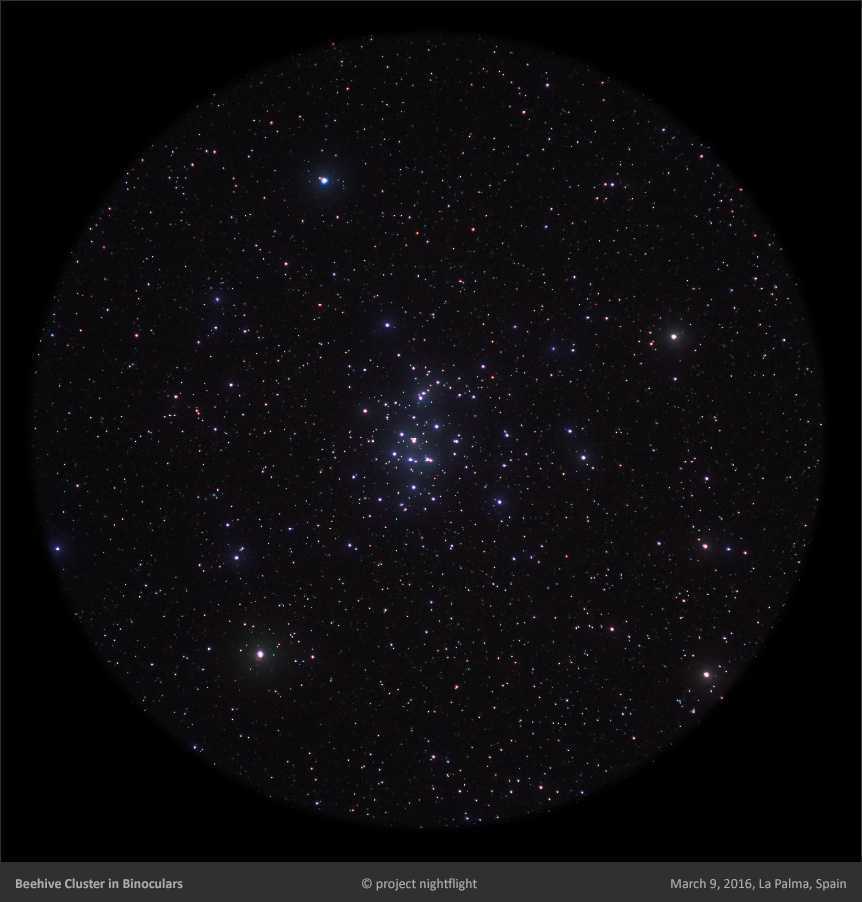
Another marvelous binocular object is coming up in the night sky and in our series of bino view simulations: the Beehive Cluster. It is a remarkable celestial object
in many ways. For example, it is visible to the naked eye under dark sky conditions, where it looks like a faint nebulosity within the constellation Cancer. It is even
possible to gaze some of its brightest component stars. Under the dark, protected skies of La Palma we were able to identify some three to five individual stars in
the Beehive Cluster with unaided eyes one amazingly crisp night.
Another noteworthy detail about this star cluster is that it has been known since ancient times and can be found in numerous early records of ancient Greek and
Roman astronomers. Most interesting, however, is probably the fact that it was one of the first objects studied with a telescope - by Galileo Galilei himself. We can
follow in the footsteps of these early astronomers, and with much better instruments. Today's binoculars reveal Praesepe, or M44, two other names of this open
cluster, as a true marvel of bright stars grouped in the center of the field of view, which is embedded in a trapezoid of three reddish and one blue star.
The image is one of project nightflight's binocular simulations and represents the six-degree field of view of a typical 8x30 or 10x50 bino. The imaging techique
involves HDR photography and a special filter to produce both the brilliance of the night sky as seen through binoculars and the soft glow of bright objects. This
image of M44 war shot at a dark location on La Palma, the most northwestern island of the Spanish Canaries. Previous images in our bino sim series include the
Perseus Double Cluster and the pair of open clusters M46/M47.
[Released March 19, 2017]







